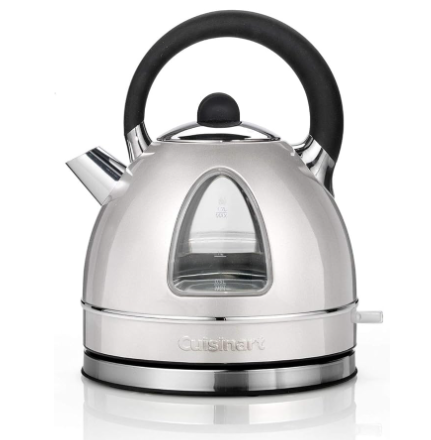Fermented Teas Explained: From Pu-erh to Kombucha
METHODS
10/7/20257 min read


Introduction to Fermented Teas
Fermented teas represent an intriguing category within the vast world of tea, characterized by a unique process that enhances both flavor and health benefits. The fermentation process involves the microbial transformation of tea leaves, driven primarily by bacteria and yeast. During fermentation, the natural sugars present in tea are converted into acids, alcohol, and gases, resulting in a range of new flavors and potential health-promoting compounds. This process not only alters the taste profile but can also enrich the tea with properties that appeal to health-conscious consumers.
Among the many types of fermented teas, two notable examples are Pu-erh and Kombucha. Pu-erh, a traditional Chinese tea, undergoes a lengthy fermentation process that contributes to its earthy and robust flavor. This tea has been celebrated for its potential health benefits, such as aiding digestion and promoting gut health. On the other hand, Kombucha, a more modern fermented tea, is made by fermenting sweetened tea with a symbiotic culture of bacteria and yeast (SCOBY). Its effervescent qualities and tangy taste have garnered significant popularity, particularly in health and wellness circles.
The growing interest in fermented teas can be attributed to their distinctive flavors and health advantages, including antioxidant properties and probiotic content. As consumers seek alternatives to sugary beverages, fermented teas have emerged as a trendy option that offers both enjoyment and wellness. Additionally, the diversity in flavors, ranging from sweet and fruity to tangy and earthy, allows for personalized tea experiences that cater to individual palates. With their rich history and modern appeal, fermented teas continue to rise in prominence within the tea industry.
Understanding Pu-erh Tea
Pu-erh tea, primarily produced in the Yunnan province of China, stands out in the world of teas due to its distinctive fermentation process. Unlike other teas that undergo minimal oxidation, Pu-erh tea is subjected to microbial fermentation, which contributes to its complex flavors and health benefits. The fermentation process gives rise to two main varieties: raw (sheng) and ripe (shou) Pu-erh. Raw Pu-erh is made from sun-dried tea leaves and is naturally fermented over time, developing a more vibrant and floral taste as it ages. In contrast, ripe Pu-erh undergoes a controlled fermentation process known as "wo dui," resulting in a mellower, earthier flavor profile that is ready for consumption immediately after processing.
The aging process plays a crucial role in the flavor and quality of Pu-erh tea. As Pu-erh ages, its characteristics evolve, leading to deeper, smoother flavors and a reduction in bitterness. Some aficionados argue that older Pu-erh varieties often exhibit a desirable complexity that younger versions do not possess. In terms of health benefits, Pu-erh tea is renowned for its potential to aid digestion, promote weight loss, and lower cholesterol levels due to its rich content of polyphenols and other bioactive compounds.
When it comes to brewing Pu-erh tea, the process is slightly different from other teas. It is recommended to use boiling water, typically around 200°F to 212°F, allowing for a full extraction of flavors and aromas. A gongfu-style brewing method, which involves multiple short steepings, can help bring out the tea's depth. Pairing Pu-erh with earthy dishes, such as mushrooms or robust meats, can enhance the overall experience, making it a delightful accompaniment to various meals.
Exploring Kombucha
Kombucha is a widely recognized fermented tea beverage that has gained significant popularity in recent years. This effervescent drink is created by fermenting sweetened tea using a symbiotic culture of bacteria and yeast, commonly referred to as SCOBY. The brewing process for Kombucha starts with the preparation of a base tea, typically black or green, which is sweetened with sugar to provide nourishment for the fermentation organisms. Once the sugar is dissolved, the SCOBY is introduced, and the mixture is allowed to ferment at room temperature for a variable duration, usually between one to three weeks.
The flavor profile of Kombucha can vary considerably based on several factors, including the type of tea used, the sugar content, and the duration of fermentation. Many enthusiasts experiment with additional flavoring agents such as fruits, herbs, or spices during or after fermentation, leading to a multitude of unique combinations. These additions not only enhance the taste but can also impact the nutritional value, with some variations offering increased vitamins and probiotics, which are beneficial for gut health.
As interest in health and wellness continues to grow, Kombucha has been promoted for its potential health benefits, which may include improved digestion, enhanced immune function, and increased energy levels. However, consumers should be aware of potential risks associated with Kombucha consumption, especially for individuals with compromised immune systems or those sensitive to caffeine or alcohol. Home brewing has become a trend, allowing individuals to create personalized flavors and cultivate their own SCOBY. While this practice can be rewarding, it necessitates careful attention to hygiene and fermentation processes to avert contamination.
Commercially, numerous brands offer a diverse range of Kombucha products, each varying in flavor profiles, carbonation levels, and health benefits. Some brands prioritize organic ingredients, while others may incorporate functional additives like adaptogens or additional probiotics. Understanding these differences can assist consumers in making informed choices about which Kombucha best aligns with their tastes and dietary preferences.
Other Fermented Teas and Their Benefits
Fermented teas extend beyond the well-known Pu-erh and Kombucha, encompassing various unique beverages that boast distinct fermentation processes, flavor profiles, and health advantages. One such option is Kefir tea, a delightful concoction that combines tea with water kefir grains. This process introduces a symbiotic culture of bacteria and yeast, resulting in a fizzy, tangy drink with probiotic properties that support gut health. Kefir tea is praised for its mild flavor and effervescent qualities, making it an enjoyable choice for those who prefer a less sugary beverage while still seeking digestive benefits.
Another notable fermented tea is Cha fermented tea, a traditional beverage originating from the mountainous regions of Tibet and China. This tea undergoes a unique fermentation process involving the leaves of the Camellia sinensis plant being compressed and aged, resulting in a robust, earthy flavor. This tea is typically rich in antioxidants and has been associated with numerous health benefits, including improved digestion, enhanced immunity, and even potential weight management properties.
Additionally, there are lesser-known varieties like Jun tea, which combines green tea with honey and is fermented with a SCOBY similar to Kombucha. The result is a light and refreshing drink with a subtle sweetness, offering benefits such as anti-inflammatory properties and a boost in energy levels due to its nutrient-rich components. Each of these fermented tea options showcases the diversity and richness present in this category of beverages.
When comparing these teas to Pu-erh and Kombucha, each brings its own unique flavor and health benefits to the table. While Pu-erh is esteemed for its deep, complex flavors and potential cholesterol-lowering effects, Kombucha garners attention for its refreshing taste and abundance of probiotics. Exploring these various fermented teas can enhance not only health but also enjoyment, encouraging consumers to broaden their horizons in the world of fermented beverages.
One of our favorite choice of kettles..
Cuisinart Traditional style Electric kettle Fast boil


Click 'Shop Now!' to find on Amazon now!...
📐 Specs – Cuisinart Traditional Style Electric Kettle
Capacity: 1.7 litres
Minimum Fill Level: 0.5 litres
Power: 3000 watts (fast boil)
Material: Brushed stainless steel body
Heating Element: Concealed
Lid Type: Fully removable (not hinged)
Water Level Windows: Dual (on both sides)
Spout: Large, drip-free design
Base: 360° swivel base (cordless when lifted)
Safety Features: Auto shut-off, boil-dry protection
Filter: Removable anti-scale filter
Cord Storage: Integrated in base
Illumination: Power switch lights up when heating
Dimensions (approx.): 28 cm (H) x 22 cm (W) x 20 cm (D)
Warranty: 3 years
Pros & Cons
Pros
Fast Boiling: Thanks to the 3000W element, water heats up quickly — ideal for busy mornings or late-night study sessions.
Generous Capacity: 1.7L means fewer refills, even when making drinks for multiple people.
Durable Design: All-metal body resists wear and feels sturdy — much better than cheap plastic alternatives.
Dual Water Windows: Easy to check water level from either side — helpful if counter space is tight.
Cordless Pouring: The 360° base makes serving simple and tidy.
Safe and Reliable: Includes boil-dry protection and auto shut-off for peace of mind.
Removable Filter: Helps reduce scale buildup, especially useful in hard water areas.
Stylish Appearance: Traditional design adds charm and fits in nicely with a range of decors.
Cons
Taller Profile: It may feel a bit bulky in very cramped kitchens or dorm setups.
Lid Is Fully Removable: No hinge means you have to set it aside when filling — not ideal if space is limited.
Hot Exterior: Stainless steel body can get hot to the touch during use.
No Temp Control: Only boils to 100°C — no option for lower temperatures for green or white teas.
Slightly Heavier When Full: The weight might be noticeable if you're carrying it between sink and counter often.
Not Whisper Quiet: It's not loud, but the fast boil feature makes a bit of a hum — normal, but worth noting.
My Review
I’ve used the Cuisinart Traditional Style Kettle in a small kitchen setup and was really impressed by how well it performs. First and foremost, the boil speed is excellent — it’s noticeably faster than lower wattage models. Whether you're in a rush or just want tea right now, it delivers.
The look and feel of the kettle really stand out. It feels more like a proper kitchen appliance and less like a student quick-fix product. It’s also big enough for sharing — perfect if you’re in a flat or dorm with roommates — but still compact enough to fit on a tight counter without hogging space.
The dual water windows are genuinely useful — especially in smaller spaces where you might not always have the best angle to check levels. The cordless design also makes serving feel much less fussy.
Sure, the fully removable lid could be a little more convenient, and the body gets warm during use, but for the price and performance, it’s hard to complain.
Final thoughts: If you're in a dorm, flat, or just working with limited space, but you still want something reliable, fast, and nice-looking — this kettle is 100% worth considering. It blends traditional charm with modern performance in a really satisfying way.
